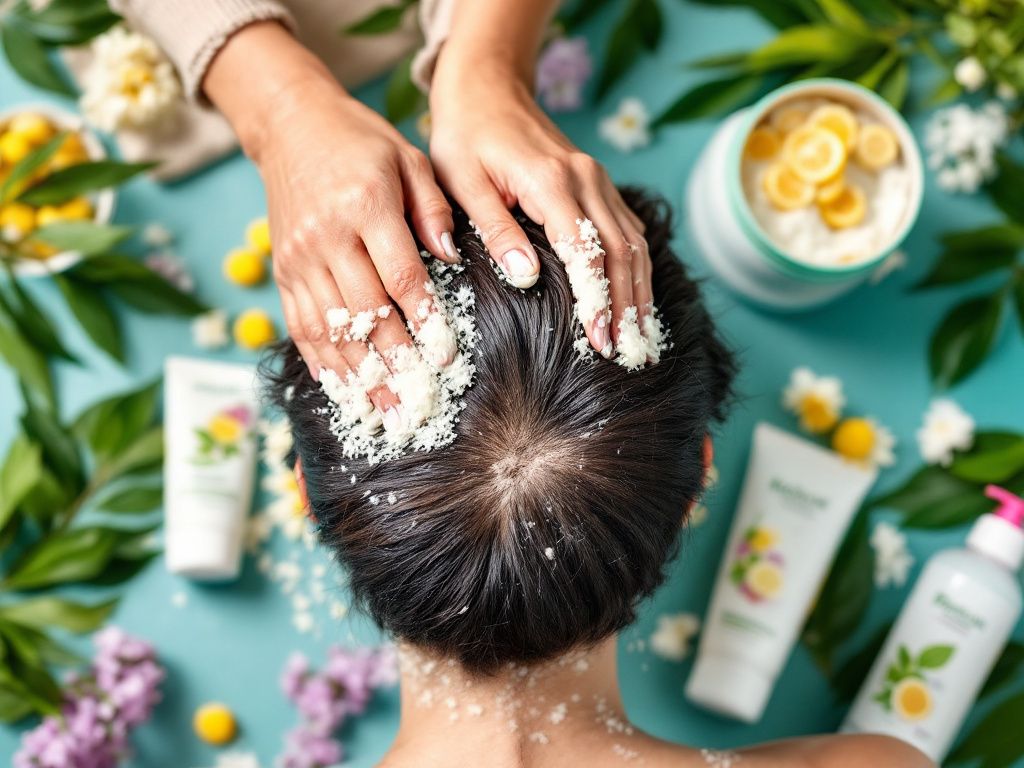
Ever stepped out of the shower, let your hair stay damp for way too long, and thought, “What could possibly go wrong?” Well, maybe it’s time we talked about something lurking in the damp corners of our scalp. Something like hair mold, or more commonly, hair mildew. Yes, that’s right—mold can actually grow on our hair if we’re not cautious. So, let’s unravel why this happens and, most importantly, how we can keep our locks safe.
Mildew in Hair: What’s the Deal?
Picture this: you decide to try that chic new protective style involving braids. You’re loving it but struggle to dry your hair thoroughly. Fast forward a few days, and *wham*, there’s a weird smell and itchiness that wasn’t part of the plan. What happened?
Why Does Mold Grow in Hair?
Mold in hair? Sounds gross, right? But the truth is, mold loves moisture. It thrives in humid, dark environments, making your damp scalp and hair almost an all-inclusive resort for these unwelcome guests.
- Moisture and Lack of Airflow: After washing, if your hair stays wet for hours due to thick braids, tight styles, or using heavy hair products, it creates the perfect scenario: moisture trapped with no easy way to dry.
- Heat and Humidity: We’re talking those really hot, humid days. Sweat collects on our scalps, which increases moisture content. Combined with limited airflow, your head becomes a fertile ground for mildew.
- Product Buildup: Heavy creams, gels, and oils…? They may seal moisture in a bit too well. This might prevent your hair from ever really drying and that’s a green light for mildew.
Now that we’ve got a grip on the causes, let’s a chat about keeping things fresh and mold-free.

Keep Mold at Bay: Tips for Prevention
When it comes to avoiding hair mildew, proactive care is the real hero of the day. Here’s what you can do:
Lighten Up on Products
Ditch heavy products if they’re not essential. Instead, opt for lightweight conditioners or serums that won’t suffocate your hair (think less build-up, more breathable follicles).
Dry Your Hair Vigilantly
**Blow-Dry Wisely**: Give your hair a chance to dry properly. If you’re using heat, go for the cool settings on your blow dryer. Air drying works well too if your hairstyle allows it, just ensure every bit of your hair gets dry, especially those sneaky roots.
Switch Up Your Styles
Try alternating between different hair styles. If braiding is your thing, that’s fabulous! But give your scalp a breather between styles. Let it air out! This practice invites so much more than just good vibes – it also invites health.
Clean Your Accessories

Regularly clean brushes, combs, and styling tools. Funky tools contribute to mildew if they’re carrying spores from previous mildew encounters. Plus, who wants to use a gross brush anyway?
Better Habits, Stronger Hair
Think sleep and exercise. Sometimes we skip right past the basics! Sleeping in a heavily damp top is a mildew invite. Likewise, nothing starts a cycle of sweat and potential moisture retention like a misguided exercise routine with your hair pulled up tightly while wet.
Breaking A Mildew Issue Down
Imagine we identified this early. You’ve started noticing that odd smell—one that’s distinct and unpleasant. It’s the red flag here. How do we handle this without, you know, hitting the panic button?
The Shampoo Dance
A therapeutic way to treat hair mildew starts with a clarifying shampoo. It’s your best friend in this situation. Deep-clean the hair and scalp to remove any old product residue and spore adventures. Look for shampoos designed for this kind of hefty duty.
Try an Antifungal Approach
Consider antifungal shampoos or home remedies, like adding a splash of apple cider vinegar to your routine. It’s natural, soothing, and effective—simply delightful!

Steam Clean Your Hair
Get scientific! Steaming your hair in a non-comedogenic, humidity-preserved method can help open the cuticles and really help clean the roots, washing away any mildew formations.
Regular Trims
If the mildew seems to be more persistent or resistant to home remedies, first of all, keep your head up, you’re doing great! But perhaps it’s time for a visit to a professional hair stylist or trichologist to trim damaged areas, which allows fresh growth to thrive.
Hair Care is Self Care
Beyond the tangible steps we’ve unfolded here, it boils down to regular and loving commitment to your hair’s messages—listen to what your hair says about how it feels, and don’t skip out when it shows signs of needing a little TLC.
Developing an awareness of our wet hair habits helps eliminate or reduce risks over time. The keyword is consistency. Carve out a little ‘me-time’ every week to indulge your scalp needs, be it through essential oils or a scalp scrub that’s both rejuvenating and cleansing.
Staying Open to New Habits
Give ideas from your fellow hair enthusiasts a try—there’s a world of tips waiting to help you level up your hair care game! We uh, sometimes slip due to our packed schedules and routines. I mean, who hasn’t dashed to work with damp hair just once? But tackling mildew and promoting a healthy scalp is worth every minute of thoughtfulness we give it.
Here’s hoping that in the not-so-distant future, hair mold becomes one of those things you just wave bye-bye to. With knowledge comes power—and healthier, bouncier, mildew-free hair. Let’s toast to that, with dry roots, of course! Trust me on this, your hair will dance in gratitude.
Frequently Asked Questions
What is hair mildew and how does it occur?
Hair mildew is a type of fungus that grows in moist and humid environments. It occurs when wet hair is not allowed to dry thoroughly, trapping moisture in the hair and scalp. This creates an optimal environment for mildew growth, often leading to symptoms such as an unpleasant odor, itching, and irritation[1][3][4).
What are the symptoms of hair mildew?
The symptoms of hair mildew include an unpleasant, musty smell from the scalp, persistent itching and irritation, increased accumulation of dead skin cells leading to dandruff-like flakes, and potentially a sensation of heaviness and pain in the head. The scalp may also appear red and inflamed due to excessive scratching[1][3][4).
How can I prevent hair mildew?
To prevent hair mildew, ensure your hair is completely dried after washing or getting wet. For thick hair or excessive sweating, using heat to dry the hair or cleansing the scalp with an astringent like Sea Breeze can be helpful. Avoid sleeping with wet hair, and consider using a microfiber towel to dry the scalp. Keeping pillows and sheets clean and using breathable materials like silk pillowcases can also help[3][4][5).
How can I treat hair mildew?
To treat hair mildew, use antifungal shampoos containing agents like Ciclopirox Olamine, Salicylic acid, or Ketoconazole. Natural remedies such as apple cider vinegar and tea tree oil can also be effective. For severe cases, a visit to a dermatologist may be necessary for prescription antifungal medicines or topical creams. A deep cleansing and scalp detox at a professional hair salon can also be beneficial[1][3][5).
References


Leave a Reply